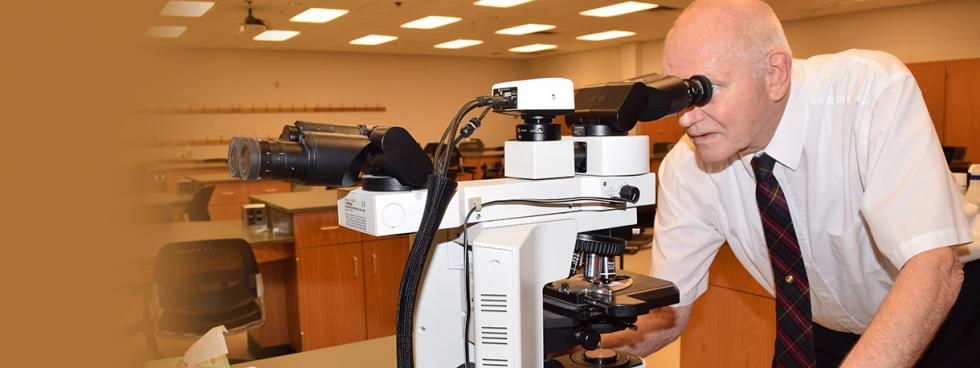
Still Dancing
Every Wednesday, Dr. John Greve makes it a point to return to his old stomping grounds in the College of Veterinary Medicine.
“Right after I retired, I came out and helped my former colleagues with a case or two,” the professor emeritus of veterinary pathology says. “Now my visits are more of a social thing. I come out to see people.”
Greve continues to dress the part of the distinguished faculty member he was in the college for 36 years from 1963 to 1999. He dons a tie for his Wednesday visits to the college before proceeding to the Mary Greeley Medical Center in Ames where he does volunteer work.
“I’ve always said ‘you have to bloom wherever you’re planted’ and Iowa State and Ames have become our homes,” Greve said.
A lifetime in Ames almost didn’t happen for Greve. Iowa State originally offered an academic position to Greve’s major professor at Purdue University.
“He didn’t want the job but fortunately, he told Iowa State about me and here I am,” Greve recalled. “I don’t have any regrets. This has been a wonderful place both professionally and where to raise a family.
“I had several offers over the years but none even came close to tempting me from leaving Iowa State.”
Greve’s career was spent studying parasites and parasitic diseases, a career path that began while he was a veterinary student at Michigan State University.
At Iowa State, Greve taught veterinary parasitology courses, looking at diseases caused by parasites.
“Parasites are a big issue in food and fiber animals,” he said. “They are something all veterinarians see every day.”
While parasites are an everyday occurrence for veterinarians, for many veterinary students they aren’t all that fascinating. Greve realized that and tried to make things a little more interesting for the students in his classes.
One such method was his “Demodex Dance,” where he physically portrayed how the parasite would look under a microscope.
“Demodex looks a little like a microscopic alligator,” Greve says. “When I described it, I would stand like a post with my arms close to my body. I would then move them back and forth to stimulate the action students would see on a slide.
“I had fun teaching so I wanted to make it fun,” he continued. “Each parasite has its own personality and we discovered that personality as a class.”
The pig parasite – Macracanthorhynchus hirudiuaceus – became a word no one could spell, but every student knew what it was. Greve would show his students how ticks “quested” from grass onto dogs. And he couldn’t resist to incorporate a popular 1960s song, “Groovy Grubworm,” into his class presentation on maggots.
On his final day teaching, Greve’s hard work was validated. Over the years, he reinforced time after time that the color purple was toxic. If someone came to class wearing purple he would point them out.
That last day, Greve strode in a few minutes late. To his shock every student in the class had on purple.
“I broke into tears,” he remembered. “That meant a lot to me and still does.”
January 2018
